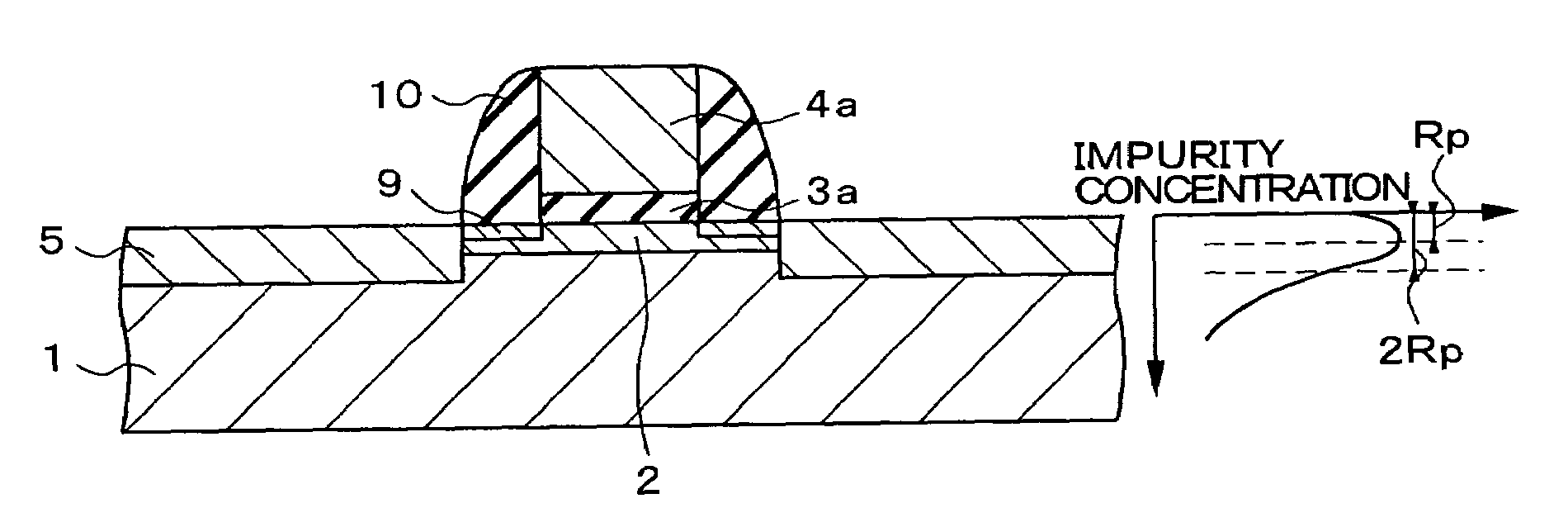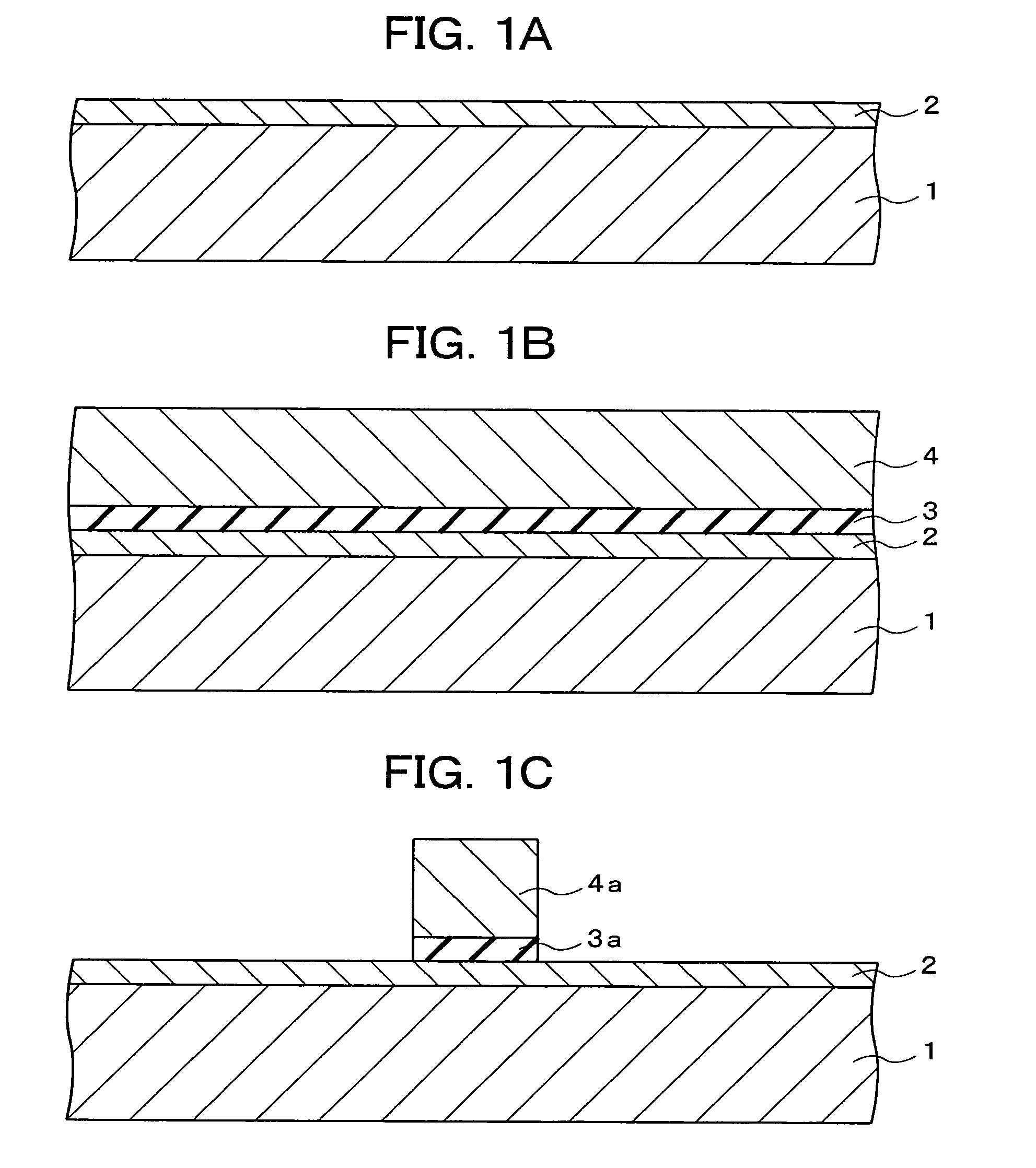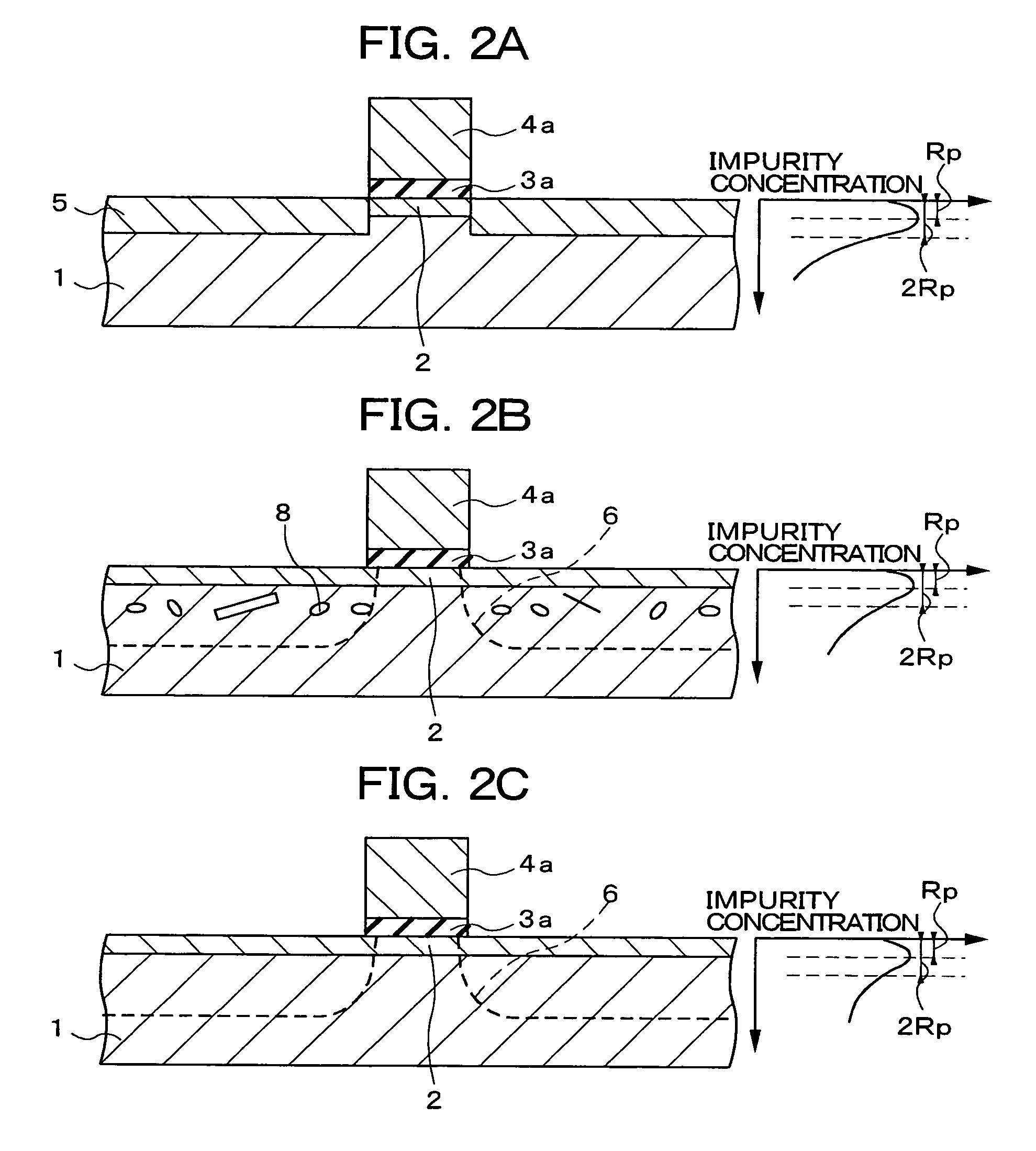MIS-type field-effect transistor
a field-effect transistor and field-effect transistor technology, applied in transistors, knitting, weaving, etc., can solve the problems of low electron-hole mobility of the si and decrease the switching speed of the misfet, and achieve the effects of preventing the formation of doping-induced dislocations, small channel length, and low power consumption
- Summary
- Abstract
- Description
- Claims
- Application Information
AI Technical Summary
Benefits of technology
Problems solved by technology
Method used
Image
Examples
first embodiment
[0109]FIGS. 1A through 1C and FIGS. 2A through 2C are sectional views showing the sequence of steps in the method for manufacturing a MISFET according to a first embodiment of the present invention. First, a strained Si layer 2 is epitaxially grown on the base SiGe layer 1 (FIG. 1A). The film thickness of this strained Si layer 2 is set to 2Tp or less, where Tp is the depth at which the impurity concentration of the source / drain of the final MISFET is at maximum. A gate insulating film 3 and a gate electrode film 4 are then grown thereon (FIG. 1B), after which patterning is performed, and a gate insulating film 3a and a gate electrode 4a having a length of 0.4 μm or less are formed (FIG. 1C). An impurity in the amount of 1×1015 cm−2 or higher is then ion-implanted into the strained Si layer 2 and the base SiGe layer 1 using the gate electrode 4a as a mask. An impurity is thus introduced at high concentration into the region in which the source / drain is to be formed, and an amorphous...
second embodiment
[0111]FIGS. 3A through 3C, FIGS. 4A through 4C, and FIGS. 5A and 5B are sectional views showing the sequence of steps in the method for manufacturing a MISFET according to a second embodiment of the present invention. First, a strained Si layer 2 is epitaxially grown on the base SiGe layer 1. The film thickness of this strained Si layer 2 is set to 2Tp or less, where Tp is the depth at which the impurity concentration of the source / drain of the final MISFET is at maximum (FIG. 3A). A gate insulating film 3 and a gate electrode film 4 are then grown thereon (FIG. 3B), after which patterning is performed, and a gate insulating film 3a and a gate electrode 4a having a length of 0.4 μm or less are formed (FIG. 3C).
[0112]An impurity for forming a source / drain extension region is then ion-implanted into the strained Si layer 2 using the gate electrode 4a as a mask, and an impurity-implanted region 9 is formed (FIG. 4A). In this instance, the implantation energy and dose are reduced compar...
third embodiment
[0115]FIGS. 7A through 7C, FIGS. 8A through 8C, and FIGS. 9A through 9C are sectional views showing the sequence of steps in the method for manufacturing a MISFET according to a third embodiment of the present invention. First, a strained Si layer 2 is epitaxially grown on the base SiGe layer 1 (FIG. 7A). The film thickness of this strained Si layer 2 may be 2Tp or greater, where Tp is the depth at which the impurity concentration of the source / drain of the final MISFET is at maximum. A gate insulating film 3 and a gate electrode film 4 are then grown thereon (FIG. 7B), after which patterning is performed, and a gate insulating film 3a and a gate electrode 4a having a length of 0.4 μm or less are formed (FIG. 7C).
[0116]An impurity for forming a source / drain extension region is then ion-implanted into the strained Si layer 2 using the gate electrode 4a as a mask, and an impurity-implanted region 9 is formed (FIG. 8A). In this instance, the implantation energy and dose are reduced com...
PUM
| Property | Measurement | Unit |
|---|---|---|
| thickness | aaaaa | aaaaa |
| gate length | aaaaa | aaaaa |
| gate length | aaaaa | aaaaa |
Abstract
Description
Claims
Application Information
 Login to View More
Login to View More - R&D
- Intellectual Property
- Life Sciences
- Materials
- Tech Scout
- Unparalleled Data Quality
- Higher Quality Content
- 60% Fewer Hallucinations
Browse by: Latest US Patents, China's latest patents, Technical Efficacy Thesaurus, Application Domain, Technology Topic, Popular Technical Reports.
© 2025 PatSnap. All rights reserved.Legal|Privacy policy|Modern Slavery Act Transparency Statement|Sitemap|About US| Contact US: help@patsnap.com



